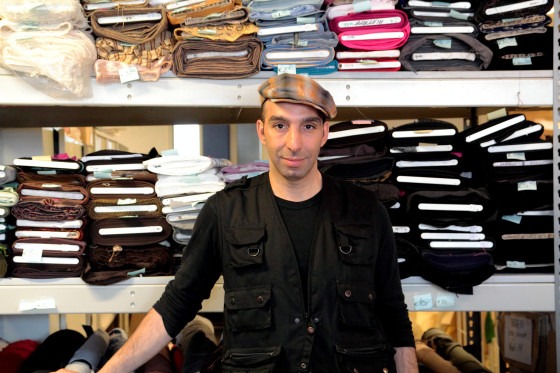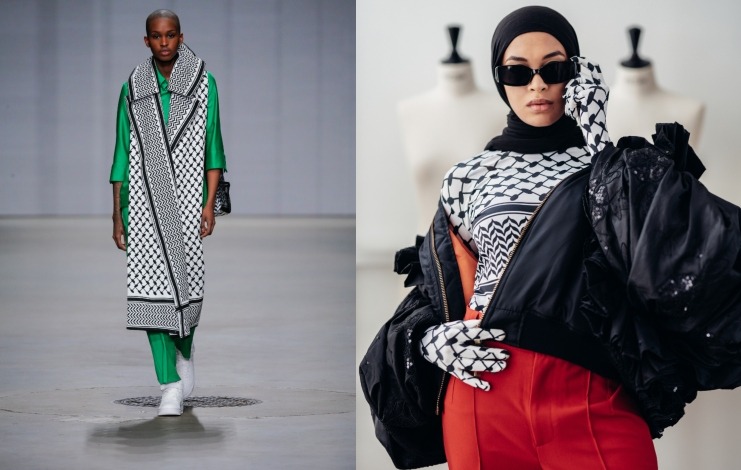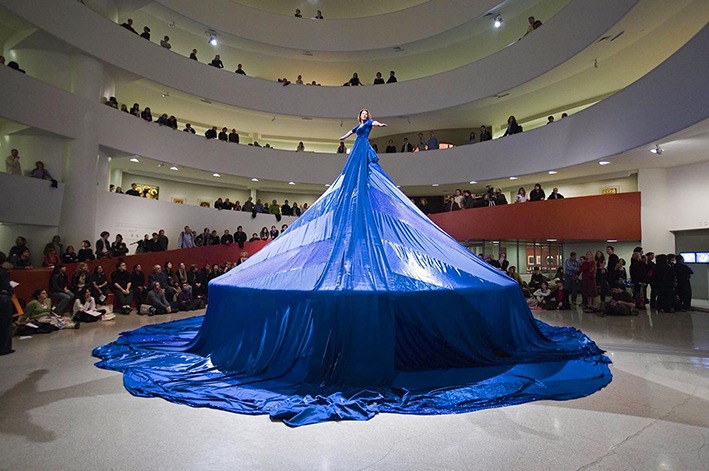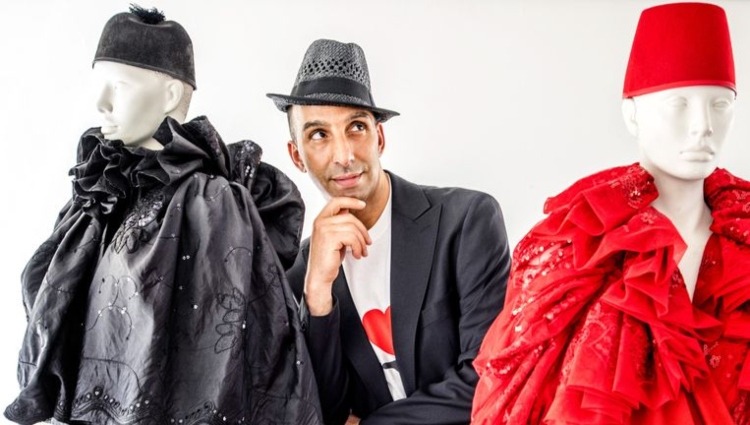In today’s world, the fashion landscape has transformed into an elastic ever-changing medium, allowing artists more freedom than ever to create works of ingenuity and innovation. One such artist is Moroccan-born Aziz Bekkaoui known to relish an out-of-the-box approach when it comes to his designs. Beyond that, his work is known to be politically engaged especially his recent World Keifyah Day collection that placed a spotlight on the Palestinian resistance. To get a better grasp and appreciation of Bekkaoui, we sat down with the artist and got to take a deeper look into his rich journey and career.
Let’s start from the beginning. How were you initially drawn to the world of fashion?
It was always my dream to become an inventor. At art school, I actually wanted to study architecture but then I discovered that fashion offers much more powerful and direct possibilities.

How has your experience at the ArtEZ University of the Arts shape you into the artist we know and love today?
Through my experience at ArtEZ University of the Arts, I had a freedom to experiment with different art forms that went beyond fashion. I got to learn about architecture and visual arts which have seeped into the kind of work I create today.
What does fashion mean to you?
Fashion is like a second skin on the human body, it is in direct contact with the person wearing it and thus determines how that person positions himself in the public space. That’s something I find extremely appealing.
Is it true that you also dabble in interior design?
Before I went to fashion school, I wanted to be an architect, even an interior designer. Currently, apart from being a fashion designer, I actually also work as an interior designer and that makes me very happy. My work mainly involves designing theater and dance venues like for example how I designed the interior of the largest cultural center in the Netherlands, Amare, in The Hague.

When it comes to your art, what is your biggest source of inspiration?
For my work, I am inspired by what happens in society. I am curious and open with a constant eye on the current happenings of our society. I reflect on that and shape it, focusing on the here and now whether its contemporary society or international developments. I also like sustainability when it comes to the materials I use in my art but also when it comes to intangible sustainability; like passing on traditions and stories.
What form of art resonates the most with you and why?
For me, the performing arts are most important. People moving in a space, that’s where everything comes together for me: architecture, fashion, theatre and dance. That is something I find extremely inspiring.
Can you tell us about the journey and story behind the World Keffiyeh Day Collection?
I have always been, and still am, fascinated in tradition and craftsmanship. Where does something come from? From what context? Why did it come into being? What was the need for something to come into being? How was it made? What is its construction? What materials and techniques were used? The keffiyeh is a piece of textile that has been communicating and speaking to us for centuries.

This prompted me to start researching the origin, meaning and construction of the keffiyeh. With the Textile Museum, we did that analysis; and then based on tradition and with the necessary craftsmanship, we had keffiyehs woven, thread by thread using cashmere and wool. This was my ode to the keffiyeh. Without the context, the keffiyeh is a collection of threads, without soul, without substance.

The keffiyeh tells the story of Palestinians’ resistance to their current harsh reality. A piece of textile with enormous communication power, linked to tradition and craftsmanship that is considered a symbol, stronger than a flag, a symbol of resistance.
Powerful social movements seem to be at the forefront of many of your projects including the World Keffiyeh Day Collection as well as the Ben Cobra exhibition, can you tell us more about that?
It is always about what is happening around me, the here and now, that is my inspiration. Whether I work as a fashion designer or curator, it’s about reflecting what’s going on in society, translating that into a collection or exhibition or installation. Everyday life and current events, that which concerns us all, that is the driving force for me.
Other than your unique individual projects so far, can you also tell us about some of your biggest collaborations in the world of fashion and art including your collaboration with Marina Abramovic?
For me, what such intense collaborations are mainly about is sharing visions. That I share and exchange my view of the world, of what is happening in society, with someone working in another discipline. That was the case when it came to the collaboration with Marina Abramovic. That exchange, that sharing can lead to an enrichment, an added value and it also makes the work more accessible to a wider, more diverse audience.

Can you let us know about any future projects you are working on as well as any future collections that you will release soon?
I follow closely what is happening around me as that is what shapes my upcoming projects. For me, it is not a matter of the latest gimmick or the next hot issue, my source of inspiration is one that is constantly changing and evolving. In terms of future projects, it is not possible now to indicate exactly what they will be, what I can say is that we are in the process of preparing some interesting collaboration projects that will be launched in the near future.
How do you see fashion in today’s world? Should fashion hold a certain message?
Art and thus fashion are about something that goes beyond the trend of the season and which colour is in right now. Textiles are my profession and my medium, I want them to contribute to the fight against injustice and to making the world a better place. Fashion is a super strong communication tool. Of course, you don’t save the world with a fashion collection but you can certainly use it to denounce something.
The resistance of the current generation is with your art, design, and yes, fashion too. To me, a piece of textile is not just a piece of textile, it communicates something. There is a story attached to it. Textiles without content, without a story, are an empty form of decoration that are soulless and pointless. Textiles can tell a story, instantly, stronger than 1,000 words. It shows where the wearer of that textile stands and how they face the world.
It makes me genuinely proud when something which I firmly believe in and have worked on from my personal idealism is recognized by people and touches them. It means that with my profession, fashion, I have added something to the world, not only in terms of “made more beautiful” but also “made more aware.”



